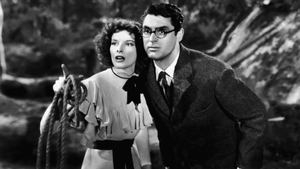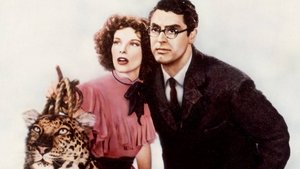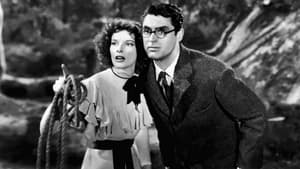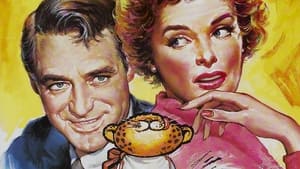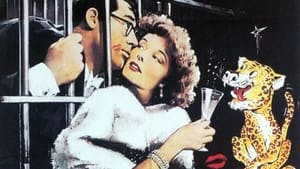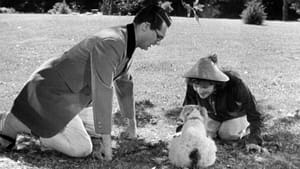Contact: [email protected]
Video Sources 0 Views
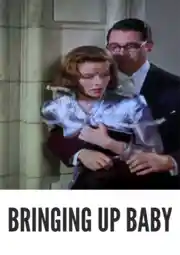
Synopsis
[ez-toc]




Introduction
In the vast realm of old movies, where black-and-white frames often tell timeless tales, there lies a gem that has been given a fresh coat of hues, breathing new life into the classic celluloid. “Bringing Up Baby Colorized” (1938), a screwball romantic comedy directed by the legendary Howard Hawks, has returned to captivate audiences, this time in vibrant color. In this article, we embark on a journey to unravel the significance of this colorized rendition, exploring the brilliance of its director, the magnetic performances by Katharine Hepburn and Cary Grant, and the ongoing debate surrounding the colorization of old films.
Read Media File Transfer Agreement: Terms and Conditions
Read FAQ
Understanding “Bringing Up Baby Colorized” (1938) and Its Cultural Impact
Howard Hawks, a maestro of multiple genres, helmed this cinematic masterpiece. “Bringing Up Baby Colorized” showcased his versatility, as he seamlessly blended screwball comedy with elements of romance. The film stars the dynamic duo of Katharine Hepburn and Cary Grant, who bring their A-game to the screen. RKO Radio Pictures, the production company behind the film, took a gamble on this unconventional narrative that unfolded with chaotic charm.
The movie follows the escapades of David Huxley (Grant), a paleontologist, and Susan Vance (Hepburn), a free-spirited heiress. The two embark on a whirlwind adventure involving a leopard named Baby and a missing dinosaur bone, leading to hilarious mishaps and unexpected romance. The screwball comedy genre, characterized by fast-paced dialogue, zany situations, and eccentric characters, finds its epitome in “Bringing Up Baby Colorized”
Behind the Scenes: The Making of a Colorized Version
The decision to colorize a classic film like “Bringing Up Baby Colorized” is not without its challenges. The process of adding color to black-and-white frames requires meticulous attention to detail. In the case of this 1938 gem, the endeavor aimed not to alter the essence of the original but to offer a new perspective to modern audiences.
Colorization involves digitally enhancing each frame, carefully selecting shades to match the era’s aesthetics. Bringing warmth to the sepia-toned memories of the past, the colorized version invites viewers to experience the narrative with a fresh visual palette. However, the team faced the challenge of preserving the film’s integrity while injecting a vibrant spectrum into its frames.
Controversies in Colorization: Debating the Artistic Integrity
The art of colorization has always stirred a pot of controversies in the film industry. Purists argue that tampering with the original black-and-white aesthetic dilutes the artistic vision of the filmmakers. On the other hand, proponents believe that colorization breathes new life into old classics, making them more accessible to contemporary audiences.
The debate extends beyond the technical aspect, delving into the emotional connection viewers have with the original presentation. Some argue that colorization alters the intended mood and atmosphere of the film, impacting the audience’s perception and cinematic experience. However, others contend that it introduces a modern touch, bridging the gap between the past and present.
Revisiting a Masterpiece: A Scene-by-Scene Analysis of the Colorized “Bringing Up Baby Colorized” (1938)
Delving into the colorized adaptation of “Bringing Up Baby Colorized,” it’s evident that the restoration process aimed at enhancing the film’s visual appeal without compromising its essence. Key scenes, such as the chaotic encounter with the leopard or the unforgettable wardrobe mishaps, shine with a newfound vibrancy.
The lush greens of the outdoor scenes and the warm tones of the interiors add depth to the storytelling. The colorized version brings out the subtleties in costume design and set details, offering a fresh perspective on the film’s visual nuances. The iconic performances of Hepburn and Grant are not overshadowed but rather elevated by the added dimension of color.
Preserving the Original: The Importance of Restoring and Archiving Classic Films
Amidst the debate on colorization, one cannot overlook the paramount importance of preserving the original black-and-white versions of classic films. Organizations like the National Film Registry play a crucial role in archiving these cultural treasures, ensuring they remain intact for future generations.
The charm of old movies lies not just in their narratives but also in the cinematic techniques of a bygone era. Black-and-white cinematography, with its play of shadows and contrasts, holds a unique place in the history of filmmaking. While colorization introduces a contemporary flair, preserving the original versions becomes a responsibility to safeguard the heritage of cinema.
The Enduring Charm of “Bringing Up Baby Colorized” (1938)
As we navigate the landscape of “Bringing Up Baby Colorized,” whether in its original monochrome or its colorized avatar, the enduring charm of the film lies in its timeless themes and humor. The chemistry between Hepburn and Grant remains as captivating as ever, transcending the boundaries of time. The screwball dynamics, the witty dialogue delivery, and the unpredictable plot twists make it a perennial favorite.
Katharine Hepburn’s Susan Vance, with her effervescent energy, and Cary Grant’s David Huxley, the bewildered yet charming leading man, create a cinematic symphony that resonates across generations. The romantic comedy genre finds its pinnacle in the subtle glances, the comedic timing, and the whirlwind romance that unfolds against a backdrop of chaos.
Conclusion
In the juxtaposition of the original black-and-white and the colorized versions of “Bringing Up Baby Colorized” (1938), we find an opportunity to appreciate the film from two distinct perspectives. The colorization process, despite its controversies, offers a fresh lens through which modern audiences can connect with the classic.
As we celebrate the enduring charm of this cinematic masterpiece, let us embrace both renditions, recognizing the value of preserving the original while acknowledging the creative endeavor to infuse color into the frames of the past. “Bringing Up Baby” continues to stand as a testament to the artistry of Howard Hawks, the brilliance of its cast, and the magic that happens when classic meets contemporary.
